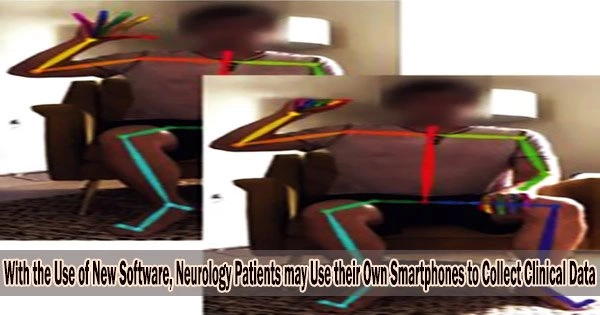According to a study by Johns Hopkins Medicine, the Kennedy Krieger Institute, and the University of Maryland, new pose estimate software has the potential to help neurologists and their patients gather crucial clinical data using basic equipment like smartphones and tablets.
Artificial intelligence known as “human posture estimation” uses straightforward photos or videos to automatically recognize and name particular landmarks on the human body, such as elbows, and fingers.
Neurologists frequently ask patients to make certain repeated motions, like tapping their fingers or opening and closing their hands, in order to quantify the speed, rhythm, and range of their motor function. The most accurate understanding of the severity of a patient’s disease is obtained from an objective evaluation of these tests, which helps to better advise therapy choices.
However, objective motion capture equipment is frequently pricy or can only record a single type of movement. Because of this, the majority of neurologists must make arbitrary judgments about their patient’s motor function, frequently by observing them as they perform various tasks.
Using video recordings of patients executing movements, the new Hopkins-led study tested whether pose estimation software could track human motion as precisely as manual, frame-by-frame visual inspections.
We want anyone with a smartphone or tablet to be able to record video that can be successfully analyzed by their physician. With further development of this pose estimation software, motor assessments could eventually be performed and analyzed without the patient having to leave their home.
Ryan Roemmich
“Our goal was to develop a fast, inexpensive, and easily accessible method to objectively measure a patient’s movements across multiple extremities,” says study lead author Ryan Roemmich, Ph.D., an assistant professor in the Department of Physical Medicine and Rehabilitation at the Johns Hopkins University School of Medicine and a human movement scientist at the Kennedy Krieger Institute.
The research team had 10 healthy subjects between the ages of 24 and 33 record smartphone videos of themselves performing five tasks often assigned to neurology patients during motor function assessments: finger taps, hand closures, toe taps, heel taps, and hand rotations.
The subjects performed each task at four different speeds. A human posture estimation technique that is freely available was used to track their motions, which were then input into the team’s program for analysis.
According to the findings, more than 96% of the motions picked up by the manual inspection approach were correctly detected by the software across all five activities. These findings hold true regardless of the location, smartphone model, and recording technique: Some participants set their smartphones on a solid surface and pressed the “record” button; other participants had a relative or friend hold the phone.
The research team’s next step is to test the software on patients who need neurological care after receiving encouraging results from their sample of young, healthy individuals. The team is currently gathering a sizable sample of footage of Parkinson’s patients performing the same five motor function tasks as the healthy volunteers did.
“We want anyone with a smartphone or tablet to be able to record video that can be successfully analyzed by their physician,” says Roemmich. “With further development of this pose estimation software, motor assessments could eventually be performed and analyzed without the patient having to leave their home.”





